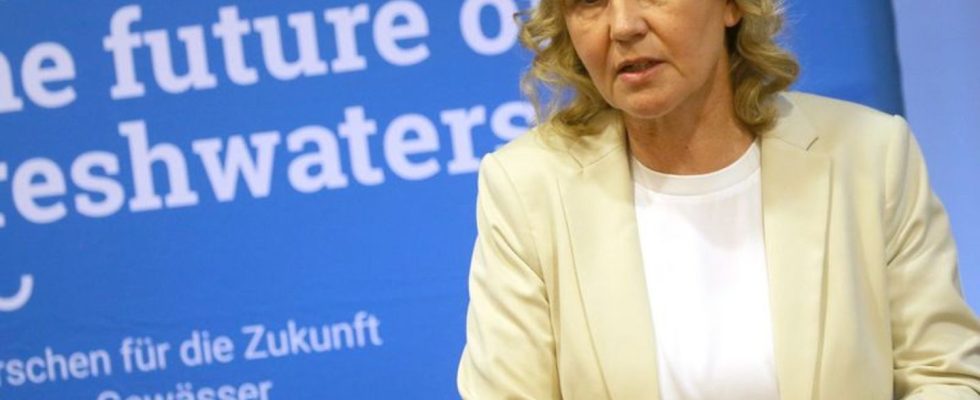Environment
After the Oder disaster, more than half of the fish are missing
Federal Environment Minister Steffi Lemke visits the Leibnitz Institute for Aquatic Ecology. photo
© Wolfgang Kumm/dpa
Is the next Oder catastrophe only a matter of weeks? Results from water experts and an initial assessment of the damage are worrying. In addition, relations with Poland remain clouded.
Almost a year after the environmental catastrophe in the Oder last summer, more than half of the fish are missing in the river, according to analyses. Especially in the middle of the Oder, the fish stocks decreased by 53 to 67 percent, as scientific studies on the condition of the German-Polish border river showed this year. Federal Environment Minister Steffi Lemke (Greens) described the situation as “depressing”.
She said on Monday at the Leibniz Institute for Freshwater Ecology and Inland Fisheries (IGB) in Berlin that time was short to reduce the high salt content in the Oder, which probably came from Polish mining. So far, however, “no paradigm shift can be seen” here in Poland. “That’s why the relationship remains tense,” said Lemke.
On Monday she informed herself at the research institute IGB about the damage balance so far after the environmental disaster and the recovery of the fish stocks. For months, there has been great concern in politics and science that the massive fish kill from last August will be repeated this summer. The IGB scientists are researching the state of the Oder and the brackish water alga Prymnesium parvum with almost 5 million euros in funding. “This small alga poses many mysteries for us,” said the scientist Jan Köhler.
High salinity, low water, high temperatures and the toxin of the algae species Prymnesium parvum, also known as golden algae, are the causes of the mass death of fish. According to the latest information from IGB scientist Christian Wolter, around 1,000 tons of fish died in the river. The numbers are higher than previously assumed, because many fish could not be collected from the bank because they sank to the bottom of the river, it was said.
Signs of initial recovery
“There is a certain concern that the situation on the Oder is similar to last summer,” said ITUC Deputy Director Thomas Mehner. From March to June of this year, the concentration of algae in the Oder also rose sharply, said project manager Martin Pusch. The IGB wants to set up a kind of early warning system for the development of the algae species, which can produce a deadly toxin but has not yet occurred in freshwater. According to the IGB, the concentration is measured at measuring stations on the German side and analyzed using a special test.
Despite the significant losses in the fish stocks of the Oder – especially in the species guester, gudgeon and bleak – there are signs of an initial recovery, said the fish ecologist and IGB scientist Wolter. All species have been identified. “It was a good reproductive year.” Any further loading of the Oder would have dramatic consequences for a very long period of time, it said. The research institute IGB as well as Lemke have long been calling for a stop to the development of the Oder, especially on the Polish side.

